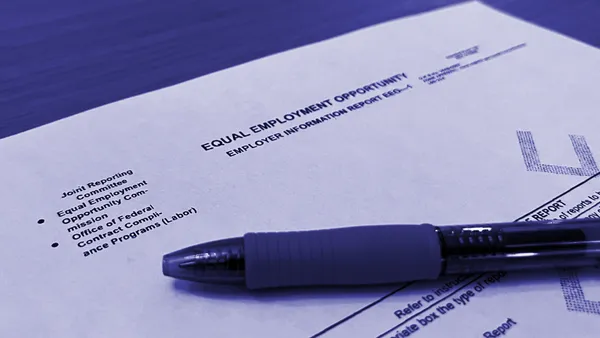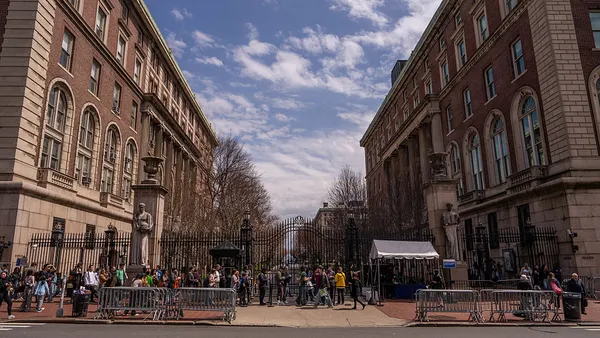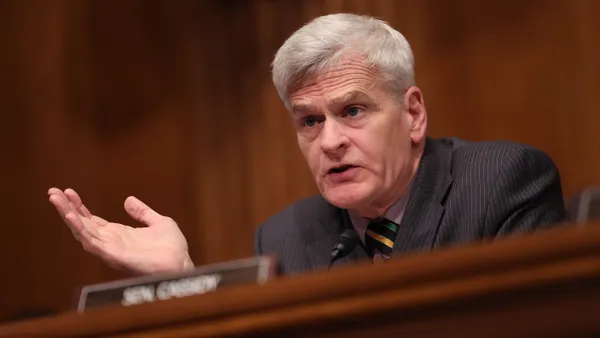UPDATE: The U.S. Equal Employment Opportunity Commission will collect pay data from both the 2018 and 2017 calendar years as part of its EEO-1 Component 2 pay data collection due Sept. 30, Acting Chair Victoria A. Lipnic announced in the Federal Register Friday. Lipnic said EEOC will begin collecting Component 2 data in mid-July and will notify filers of the survey's opening "as soon as it is available."
"We, at the EEOC, understand the difficulties of these first-ever pay data collections in this timeframe," Lipnic said in a statement emailed to HR Dive. "But, we are committed to meeting the court's order, working with employers, and making this happen by the end of September."
Dive Brief:
- Employers will have until Sept. 30, 2019, to cull and report pay data as part of their EEO-1 reporting, thanks to a federal judge's ruling Thursday, according to multiple media reports (National Women's Law Center v. Office of Management and Budget (No. 17-cv-2458 (D.D.C. Apr. 25, 2019)).
- The requirement and its deadline were previously uncertain, but the U.S. Equal Employment Opportunity Commission (EEOC) proposed the September deadline after it appeared likely the judge would reinstate the previously stayed mandate. In court filings, EEOC's chief data officer said the agency was not equipped to collect the data, but that it could meet a September deadline with the help of a third-party vendor. On April 22, plaintiffs in the case agreed to withdraw their challenge to the Sept. 30 proposal.
- In an email to HR Dive, Maya Raghu, director of workplace equality and senior counsel at the National Women’s Law Center, confirmed the news and said the judge's order means EEOC must publish a notice on its website and in the Federal Register by April 29. The judge's order also stipulated that EEOC "will have to collect a second year of data; it has to choose between 2017 or 2019 calendar year data and let the court know by May 3," Raghu added.
Dive Insight:
This is a key moment of clarity for employers looking to prepare their compliance efforts for EEO-1 reporting. The form consists of two components: a demographic survey and an employee pay data "snapshot." Employers are likely familiar with Component 1, which is unaffected by Thursday’s announcement. 2018 EEO-1 Component 1 demographic data still must be filed with EEOC by May 31, 2019.
Component 2, however, has been at the center of controversy since the commission first decided to implement it during the 2017 EEO-1 reporting cycle. The move was made under the Obama administration but, after the White House changed hands, the Office of Management and Budget (OMB) stayed the requirement in Aug. 2017. Employee advocates sued OMB and later earned a victory when Judge Tanya S. Chutkan vacated OMB's decision, effectively putting Component 2 reporting back on the table.
Since then, employers have sought a definitive yes or no answer on the need to begin the Component 2 process. Confounding the problem was a federal shutdown that would end up delaying EEOC operations right at the same time the agency lost its quorum. EEOC later opened 2018 EEO-1 reporting without the Component 2 portal, but clarified in a court document that it would not be able to collect pay data reporting without "significant practical challenges."
Now that the Sept. 30 deadline is official, EEOC and employers could face other issues. Attorneys who've spoken with HR Dive previously were not aware of many employers, if any, who had begun the pay culling process. But they say the process is fairly straightforward, despite perhaps being time-intensive for those in charge of it.
"The big question is, what is EEOC going to with this data," Denise Visconti, shareholder at Littler Mendelson, told HR Dive in an interview. Visconti said that employers should take a good look at pay data before turning it over, performing due diligence should they discover any discrepancies and perhaps speaking with managers to see if those discrepancies can be accounted for.
Meanwhile, the Sept. 30 deadline may run up against the snapshot period for the 2019 EEO-1 reporting cycle, Arthur Tacchino, chief innovation officer at compliance firm SyncStream, previously told HR Dive. Employers will need to prepare for these changes, and might want to read up on strategies to help them through what Tacchino and others expect will be a "bumpy" period for compliance.













